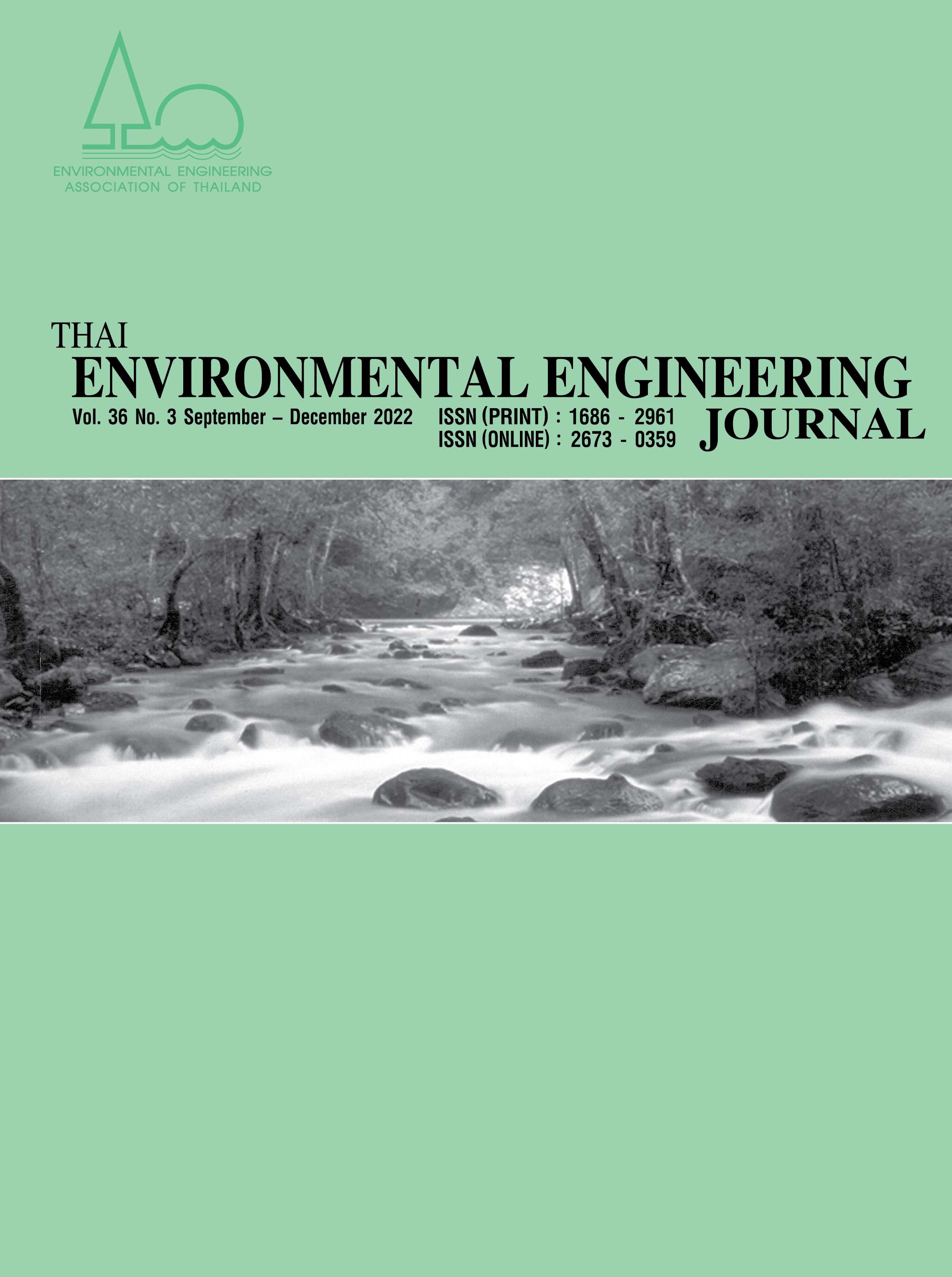Reduction of Microplastics in Washing Machine Effluent by Filtration Technique
Main Article Content
Abstract
Microplastic fibers are produced by washing clothes made of synthetic fibers. Such microplastic fibers are found in wastewater treatment systems and always flowing out into the rivers and seas resulting in environmental contamination. The purpose of this research was to study the efficiency of filters for reducing the amount of microplastic fibers in washing machine effluent by equipping a small cartridge filter at the end of the washing machine's drain hose. Five types of filters were used with the filter mesh size of 5-40 µm and a stainless-steel filter with the filter mesh size of 100-500 µm. Wastewater samples were collected from the washing machine before and after it was filtered to assess the efficiency of reducing microplastic fibers. The results showed that most of the types of microplastic fibers found were Polyethylene terephthalate (PET) and Nylons, which are plastics commonly used in the synthetic fibers. For one washing machine wash, an average of all microplastics can be released. 807.98±629.70 Items/L, with the majority of microplastics having fiber shapes, amounting to 806.86±628.99 Items/L, or 99.86% of all microplastics. From the study of the efficiency of filters, it was found that the most effective filter for reducing the amount of microplastic fibers was the smooth polypropylene filter 5 µm with an efficiency of 96.44%, but clogging easily. It is not suitable to use stainless steel filters modified to a sieve size in the range of 100-500 µm because the efficiency was 63.04%, which was not very high efficiency. Nonetheless, the flow rate was better than other types of filters. If using a suitable type of filter, it should be improved to increase efficiency.
Article Details
References
Kittipongwiset, S., Petcharak, A., Lowatcharin, J. and Phonprasert, J. 2019. Microplastic pollution in raw wastewater and wastewater treatment systems. Environmental Journal, 23(1).
Browne, M. A., Crump, P., Niven, S. J., Teuten, E., Tonkin, A., Galloway, T., and Thompson, R. 2011. Accumulation of microplastic on shorelines worldwide: sources and sinks. Environ Sci Technol, 45(21), 9175-9179.
Essel, R., Engel, L. and Carus, M. 2015. Sources of microplastics relevant to marine protection in Germany. Umweltbundesamt. 64: 1-46.
Srisathit, T. 2020. Plastic Diary: Because every time you wash your clothes We released microfibers.
Eriksson, C. and Burton, H. 2003. Origins and biological accumulation of small plastic particles in fur seals from Macquarie Island. Ambio, 32(6), 380-384.
Napper, I. E. and Thompson, R. C. 2016. Release of synthetic microplastic plastic fibres from domestic washing machines: Effects of fabric type and washing conditions. Mar Pollut Bull, 112(1-2), 39-45.
Masura, J., Baker, J., Foster, G. and Arthur, C. 2015. Laboratory Methods for the Analysis of Microplastics in the Marine Environment. National Oceanic and Atmospheric Administration, U.S. Department of Commerce. 1-30.
De Falco, F., Di Pace, E., Cocca, M. and Avella, M. 2019. The contribution of washing processes of synthetic clothes to microplastic pollution. Sci Rep, 9(1), 6633.
Habib, D., D. C. Locke and L. J. Cannone. 1998. "Synthetic fibers as indicators of municipal sewage sludge, sludge products and sewage treatment plant effluents." Water, Air, and Soil Pollution: 1-8.
Zubris, K. A. V. and B. K. Richards. 2005. "Synthetic fibers as an indicator of land application of sludge." Environmental Pollution. 138(2): 201-211.
Carney Almroth, B. M., L. Astrom, S. Roslund, H. Petersson, M. Johansson and N. K. Persson. 2018. "Quantifying shedding of synthetic fibers from textiles; a source of microplastics released into the environment." Environ Sci Pollut Res Int. 25(2): 1191-1199.
Ziajahromi, S., P. A. Neale, L. Rintoul and F. D. Leusch. 2017. "Wastewater treatment plants as a pathway for microplastics: Development of a new approach to sample wastewater-based microplastics." Water Res 112: 93-99.


